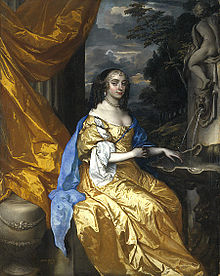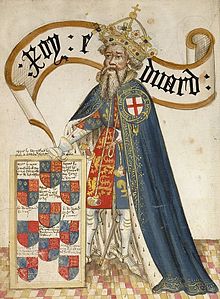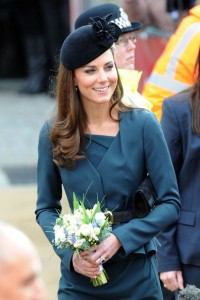On April 29, the Duke and Duchess of Cambridge will celebrate their first anniversary. Catherine was the first middle class woman to marry a direct heir to the British thrones, since Anne Hyde married the future James II in 1660. Since both Diana, Princess of Wales and Sarah, Duchess of York had experienced the collapse of their marriages despite extensive experience moving in royal circles, there were concerns that Catherine would find her introduction to royal life overwhelming.
Instead, the Duchess of Cambridge has excelled in her new role, receiving widespread praise for her charitable patronage, engagement with ordinary people, involvement in the 2011 tour of Canada and supportive relationship with the Duke of Cambridge. While other members of the royal family have been criticized this past year, the Duke and Duchess of Cambridge have received widespread popular approval, personifying the future of the monarchy.
I gave two interviews this past week on the major themes in the Duke and Duchess of Cambridge’s marriage that have captured the popular imagination. Kate Middleton, A Royal Switch from Princess Diana, discusses how the royal family has mentored Catherine, so that she will not experience the feelings of isolation experienced by Diana and Sarah. I discuss the mentorship of the younger generation of the royal family in more detail in my previous post about Catherine’s visit to Leicester with the Queen and Prince Philip.

Anne Hyde, the first wife of the future King James II. Her daughters reigned as Queen Mary II and Queen Anne.
The other interview concerned the popular pressure on the Duke and Duchess of Cambridge to start a family, One Year After Wedding, Baby Watch in Full Gear. While Anne Hyde’s marriage to the future James II was prompted by a pregnancy, William and Catherine have clearly decided to take their time starting a family.
Intense popular interest in royal births has always existed, particularly in times when the size of the royal family had direct political ramifications. For example, Elizabeth I’s decision to remain unmarried and childless and her refusal to name an heir during her lifetime provoked fears that her death would lead to numerous candidates struggling for the throne. Elizabeth I’s councillor Sir Robert Cecil maintained a secret correspondence with her cousin, King James VI of Scotland to ensure that he would peacefully succeed to the English throne as King James I, when Elizabeth died in 1603.

King Edward III, who reigned from 1327-1377. The descendants of his five surviving sons fought against each other in the Wars of the Roses.
Conversely, large royal families have also been seen as undesirable for the state. In the fourteenth century, King Edward III’s large number of sons eventually led the political factions that fought the Wars of the Roses. This circumstance was still in the popular memory during Charles I’s reign, when the public expressed relief that Queen Henrietta Maria gave birth to another daughter after two sons. More recently, the fifteen children of George III and the nine children of Queen Victoria provoked debates in parliament about the expenses incurred by a large royal family.
There is no political reason why the current Duke and Duchess of Cambridge should feel immediate pressure to start a family. The succession to the British throne is limited to the Protestant descendants of Sophia of Hanover and there are thousands of eligible candidates with this descent and religion. While the past prevalence of dynastic marriage between royal houses meant the childless monarchs faced the direct threat of a foreign ruler claiming their kingdoms, the most senior foreign monarch in the current British line of succession is King Harald V of Norway, who is 66th in line to the throne. (His grandmother was King George V’s sister, Maud).
Despite the large number of eligible candidates, the Duke and Duchess of Cambridge’s popularity is fuelling popular speculation about when they will decide to have children. The public is happy with William and Catherine’s performance as working members of the royal family and would like to see the succession continue through their immediate family.

“Conversely, large royal families have also been seen as undesirable for the state. ”
Does this suggest that there is an optimal size for royal families? Wikipedia lists 46 people in the British line of succession. I get the sense that it is best for the line to be longer than 10, but being over 100 is probably excessive (particularly if the family in question maintains itself in excessive style as a certain Middle Eastern monarchy is wont to).
Wikipedia used to list all the known descendants of Sophia of Hanover but recently reduced the published list to the top 46. A large number of Sophia’s descendants are now private citizens who do not publically announce births and deaths in their families, which made the complete list originally provided by wikipedia unreliable.